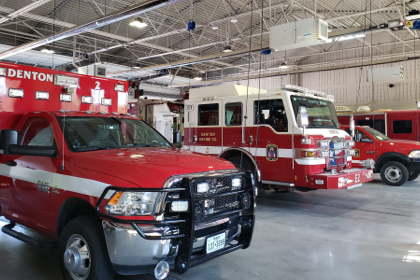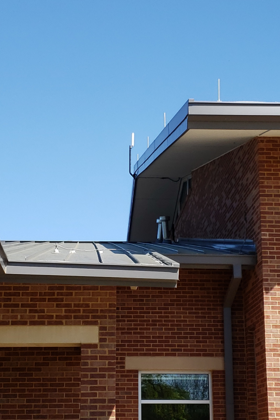Fire Station 2 recently underwent a complete rebuild. The new, $6 million facility features energy-efficient windows, insulation, and metal roofing which help reduce energy costs and the building’s environmental footprint. The downside of this energy efficient approach was that the building material prevented cellular signals from getting inside the station’s four, 75 by 75 feet apparatus bays when the doors were closed. The bays are where fire trucks, ambulance, boats, a command unit, and other support vehicles are stored.
With its location in a low cellular coverage area, Fire Station 2 firefighters historically had poor cell service. But after the rebuild was completed, they could not make or receive phone calls from their cell phones. They were also not able to receive texts consistently from shift commanders, who work from Fire Station 1 headquarters and are responsible for communicating with crews about incidents around the city and moving personnel from one station to another to ensure adequate emergency services coverage around Denton.
“The primary form of communication for shift commanders is page-to-text, and they had no way of confirming that their messages had been received,” explains Chief Kenneth Hedges of the Denton Fire/Rescue Department. “It’s critical that this infrastructure works, so that we can deliver emergency services to residents without delay.”
In addition, the Denton Fire/Rescue Department’s vehicles are equipped with mobile deck computers (MDC). Crews responding to a call log in to the MDC upon entering the vehicles while still in the bay. The computer then tracks the crew’s response time—a key analytic for the department. However, the MDCs run on cellular, which meant that response times could be off by up to 45 seconds—the amount of time it could take to get cellular signal after leaving the bay.
To combat this, crews would call dispatch, and the operators would manually log their times.
“Despite having modern technology literally at our fingertips, we had to rely on manual processes which increased the risk for human error,” says Chief Hedges. “Inaccurate response times skew our data, and could prevent us from identifying opportunities for improvement.”

